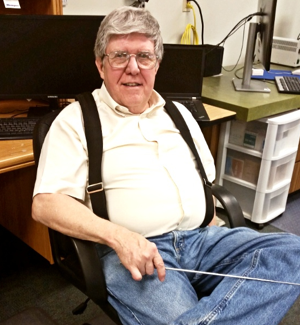Equipment to Support Regenerative Medicine Researchers
Grant Project Details:
Grant Location
Grant Description
Laboratories have traditionally used petri dishes to grow flat, 2-dimensional cells. Substances in the petri dishes, such as agar, provide the structure, or matrix, where the cells grow.
These 2D cell cultures have helped doctors diagnose diseases and aid scientists in the quest for new therapies for decades. Laboratory technicians grow culture samples from patients in petri dishes and apply antibiotics to determine which medicine can kill an infection. Scientists apply new drugs to 2D cell cultures to learn how a novel therapy could potentially treat an illness.
Unfortunately, 2D technology has limitations. One of the biggest drawbacks to 2D cell cultures is that it creates a very stiff matrix that is quite unlike the pliable, soft structure of natural tissue. The cultured cells sense this stiffness and respond differently than if they were in a softer matrix, one that more closely resembles natural tissue. Because the 2D cell cultures are poor representations of the body’s natural environment, cells grown in 2D cultures may be unreliable predictors of how a drug might behave in the human body.
3D cell cultures, on the other hand, create a soft tissue-like matrix that allows cells to differentiate in the laboratory the same way they would in the body. In other words, 3D matrix products allow cells to grow as if they were in the human body, rather than in a laboratory.
Because they mimic the soft matrix of living tissue, 3D cell cultures may help researchers uncover and understand the biological processes of diseases and discover new therapies. BRTI Life Sciences created the Cell-Mate 3D™, a chemically defined, tissue-like matrix that is ideal for cancer and stem cell research. They have also invented an instrument that accurately measures stiffness.
Scientists measure certain mechanical properties, including the stiffness of biomaterials, to help them understand how these properties correlate to specific cell responses. The ability to measure these mechanical properties is critical to the continual development of biomaterials used in regenerative medicine.
The Regenerative Medicine Minnesota grant allows BRTI Life Sciences to purchase a mechanical properties testing instrument that accurately measures stiffness. This tool will help researchers create new 3D matrix products with specific degrees of stiffness, which better replicates the different amounts of natural stiffness found in various tissues of the body. This new product will help scientists study cancer and stem cell, advance their research in new ways, and even aid in the discovery of new therapies for difficult-to-treat illnesses.
The University of Minnesota will house the instrument in Dr. Robert Tranquillo’s Laboratory, where it will be available for use by local researchers. BRTI Life Sciences is excited to offer this new, unique resource to biomedical engineers and play a positive role in Minnesota’s regenerative medicine community.
Since receiving this grant from RMM, John Brekke has gone on to receive a grant from the Iron Range Resources and Rehabilitation Board (IRRRB) to lease a new cancer research and development building. This funding was allocated due to BRTI’s success with their Cell-Mate 3D product and the prospect of attracting more biotechnology workers to the Duluth area.
Grant Awardee Biography

John Brekke is the Chief Scientific Officer and Founder of Bioactive Regenerative Therapies, Inc. Life Sciences. He holds a DDS degree from the University of Minnesota and has decades of experience in dental surgery, scientific research, and running biobusinesses.


